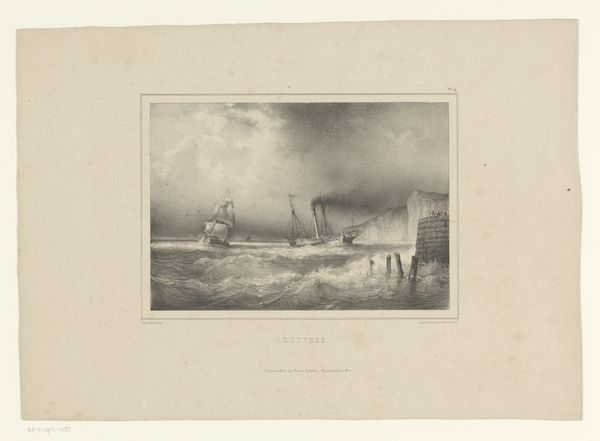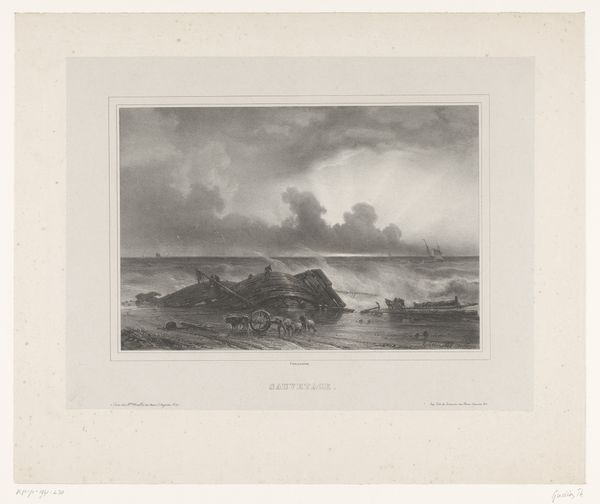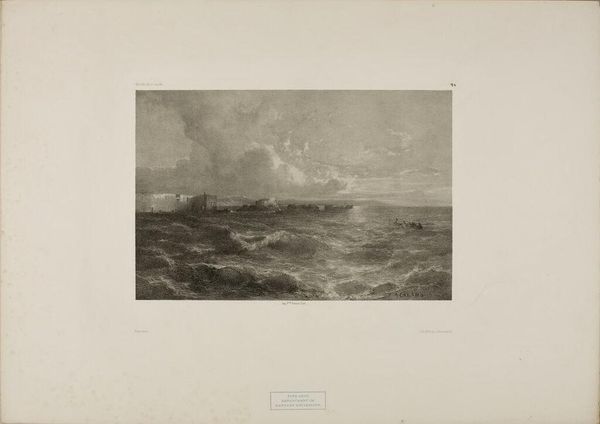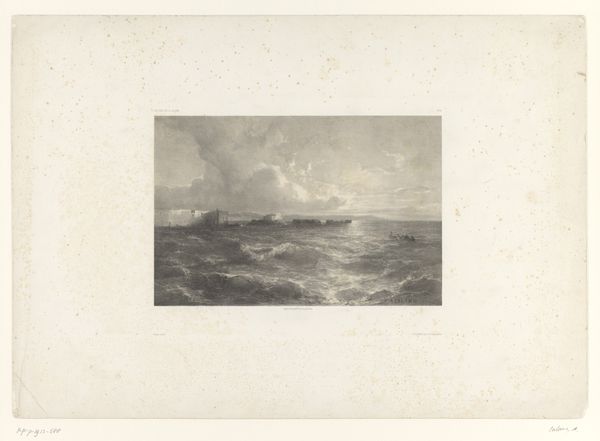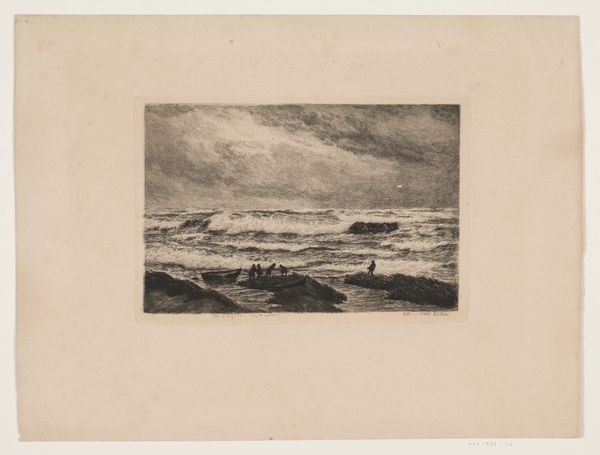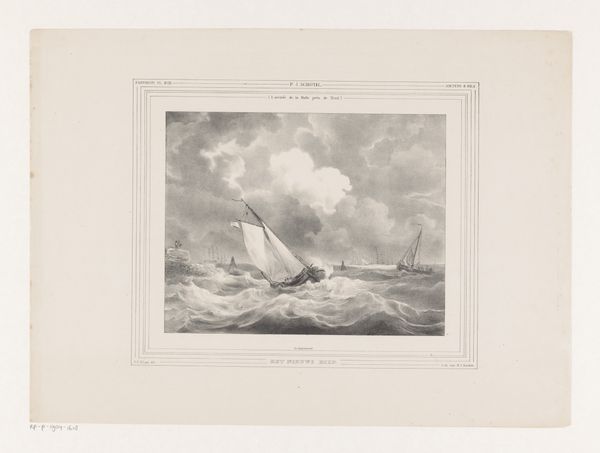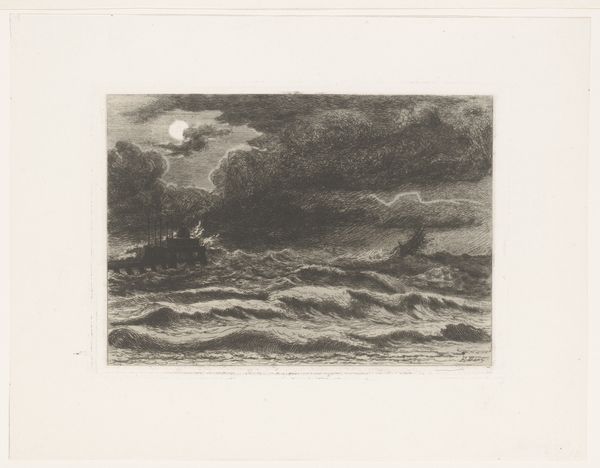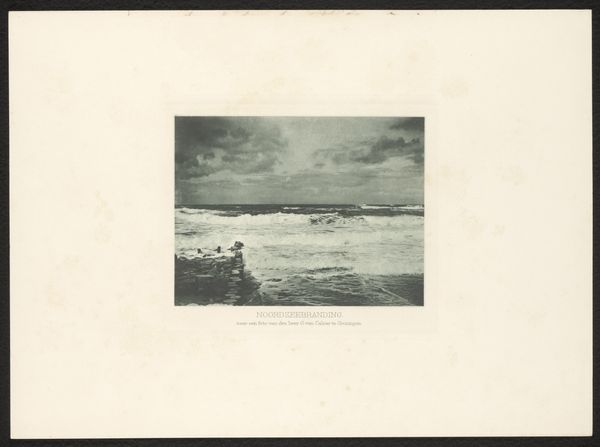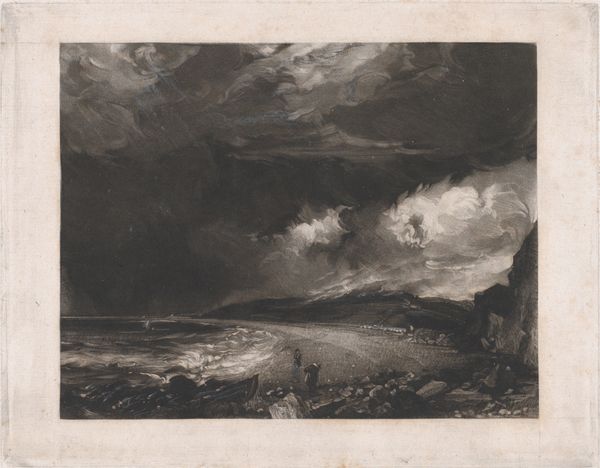
print, etching
# print
#
etching
#
landscape
#
romanticism
Dimensions: height 527 mm, width 655 mm
Copyright: Rijks Museum: Open Domain
Léon Jean Baptiste Sabatier created this print of François-René de Chateaubriand's grave. The dramatic seascape, with a tomb atop a windswept island, speaks to the Romantic era's fascination with mortality. Observe the island itself, a stark and isolated rock against a turbulent sea. Since ancient times, islands have symbolized isolation and sanctuary, a place set apart from the mundane world. Think of Delos, the Greek island where Apollo was born, or the mythical Avalon, a final resting place. The grave, illuminated by a break in the clouds, evokes Christian imagery of divine light breaking through darkness, symbolizing hope and redemption. This motif is a visual echo of the Baroque era's use of light to convey spiritual transcendence. Yet, here, the light also highlights the vulnerability of human achievement against the vastness of nature. This visual language speaks to a deep, subconscious understanding of our place in the cosmos, echoing through centuries of artistic expression. The symbol of an island as a final resting place will likely continue its cyclical progression.
Comments
No comments
Be the first to comment and join the conversation on the ultimate creative platform.


